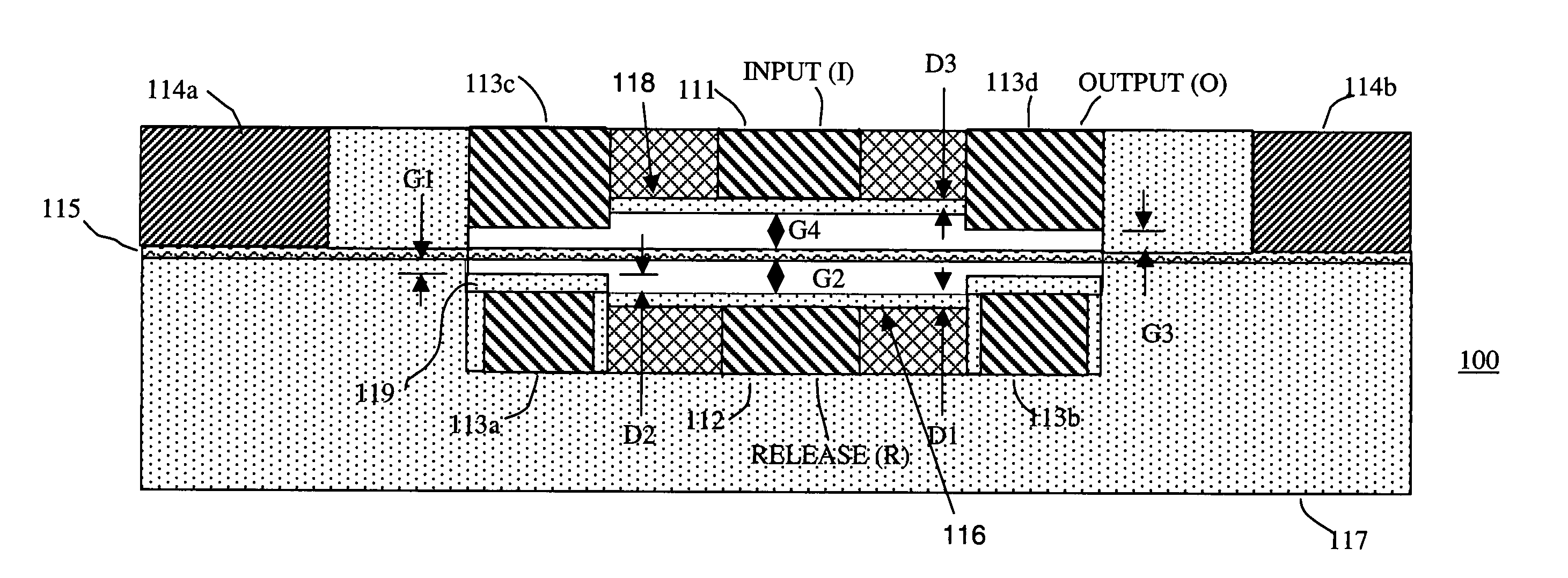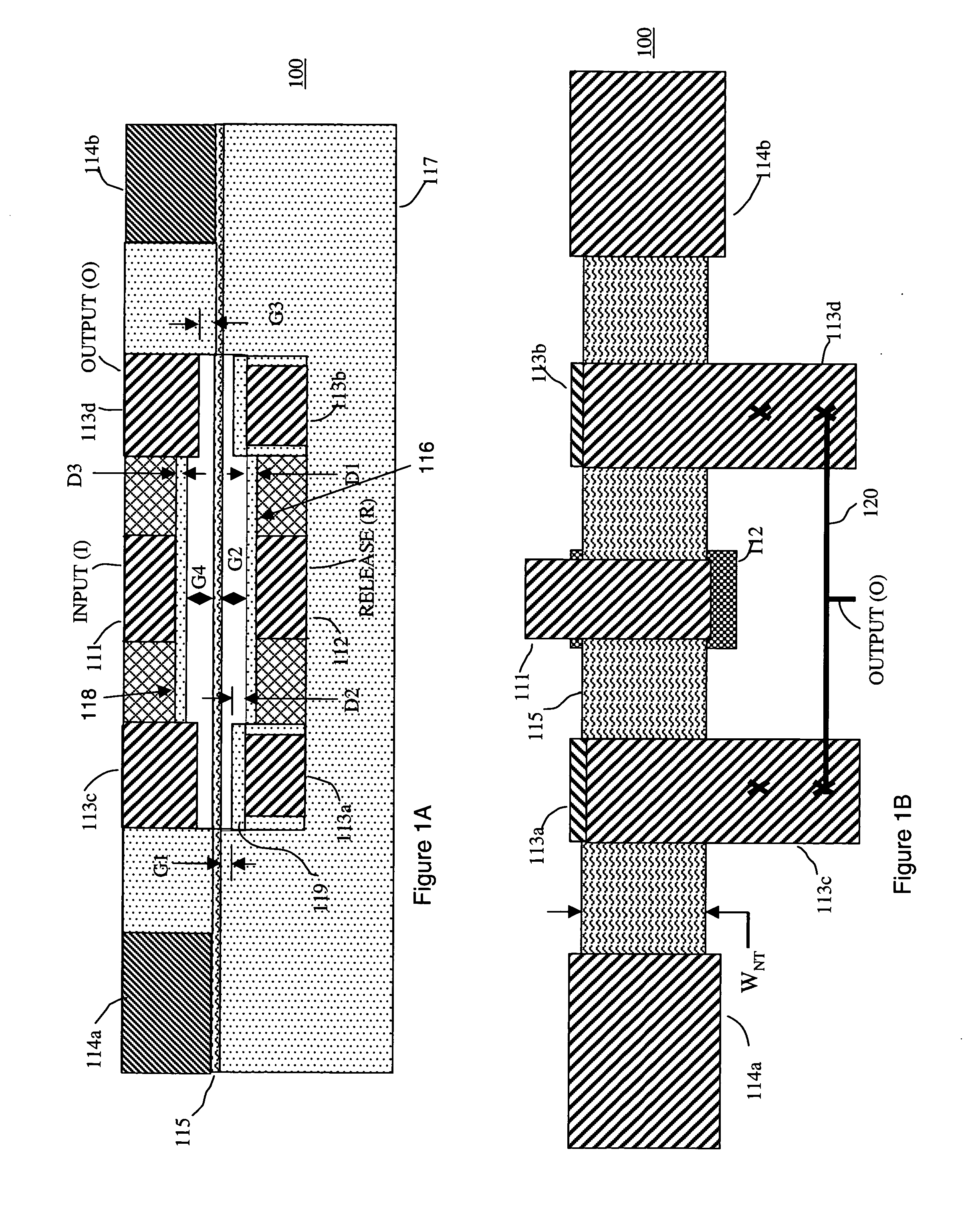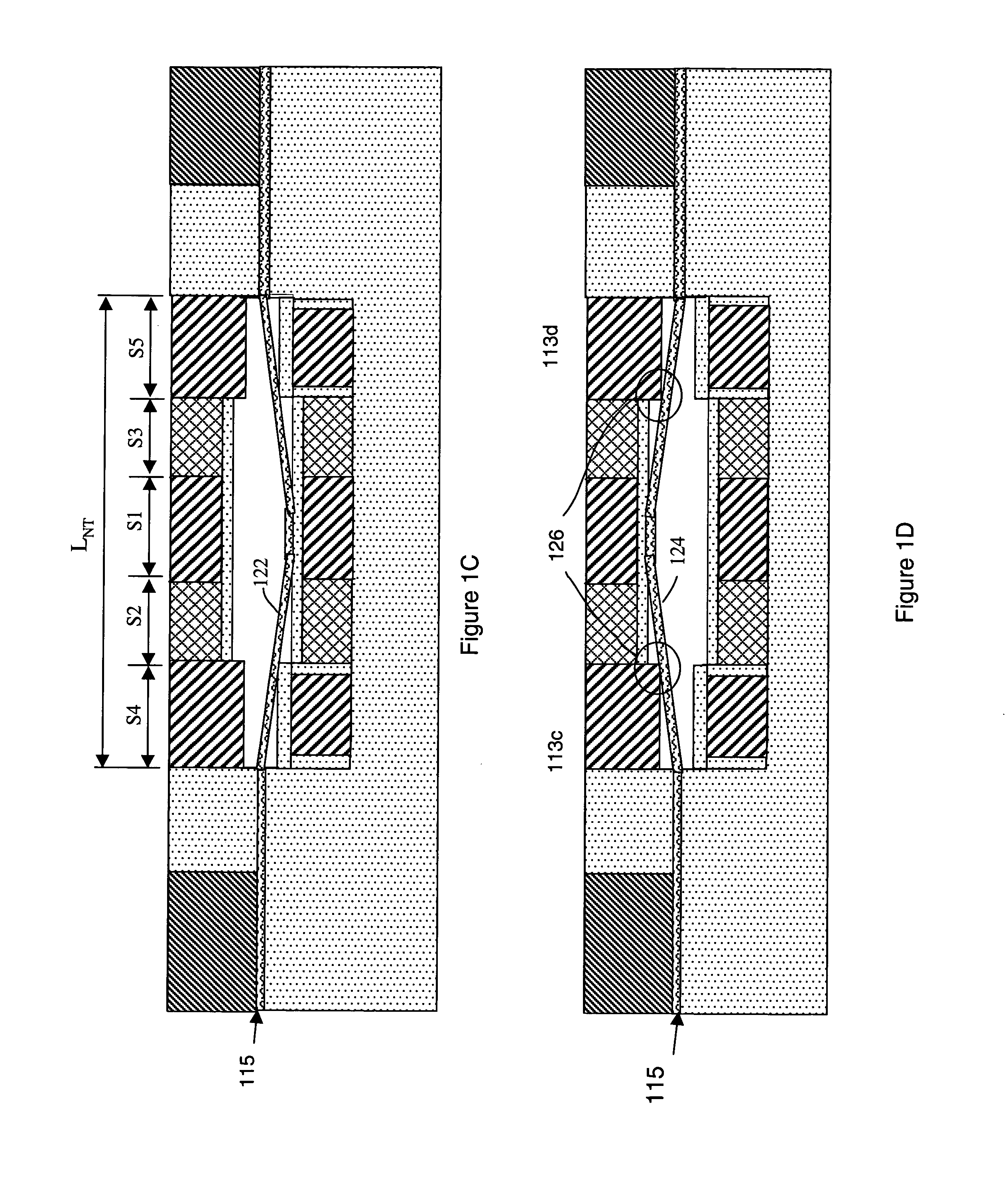Nanotube device structure and methods of fabrication
a technology of nanotubes and devices, applied in nanoelectromechanical switches, relays, instruments, etc., can solve the problems of high power consumption, density and operation speed of mos digital circuits, and limited density of bipolar digital integrated circuits
- Summary
- Abstract
- Description
- Claims
- Application Information
AI Technical Summary
Benefits of technology
Problems solved by technology
Method used
Image
Examples
Embodiment Construction
[0035] Preferred embodiments of the invention provide switching elements in which a nanotube-based channel may be controllably formed, under the influence of a control node, so that a signal may be transferred to an output node. The transferred signal may be a varying signal or a reference signal, depending on the manner in which the switching element is utilized and arranged. Preferred embodiments non-volatilely maintain the state of the nanotube switching element. Improved methods of manufacturing such devices are also provided.
[0036]FIG. 1A is a cross sectional view of a preferred nanotube switching element 100. Nanotube switching element includes a lower portion having an insulating layer 117, release electrode 112, output electrodes 113a,b. Nanotube switching element further includes an upper portion having input electrode 111, output electrodes 113c,d, and signal electrodes 114a,b. A nanotube channel element 115 is positioned between and held by the upper and lower portions. ...
PUM
| Property | Measurement | Unit |
|---|---|---|
| Structure | aaaaa | aaaaa |
| Electrical conductor | aaaaa | aaaaa |
| Area | aaaaa | aaaaa |
Abstract
Description
Claims
Application Information
 Login to View More
Login to View More - R&D
- Intellectual Property
- Life Sciences
- Materials
- Tech Scout
- Unparalleled Data Quality
- Higher Quality Content
- 60% Fewer Hallucinations
Browse by: Latest US Patents, China's latest patents, Technical Efficacy Thesaurus, Application Domain, Technology Topic, Popular Technical Reports.
© 2025 PatSnap. All rights reserved.Legal|Privacy policy|Modern Slavery Act Transparency Statement|Sitemap|About US| Contact US: help@patsnap.com



